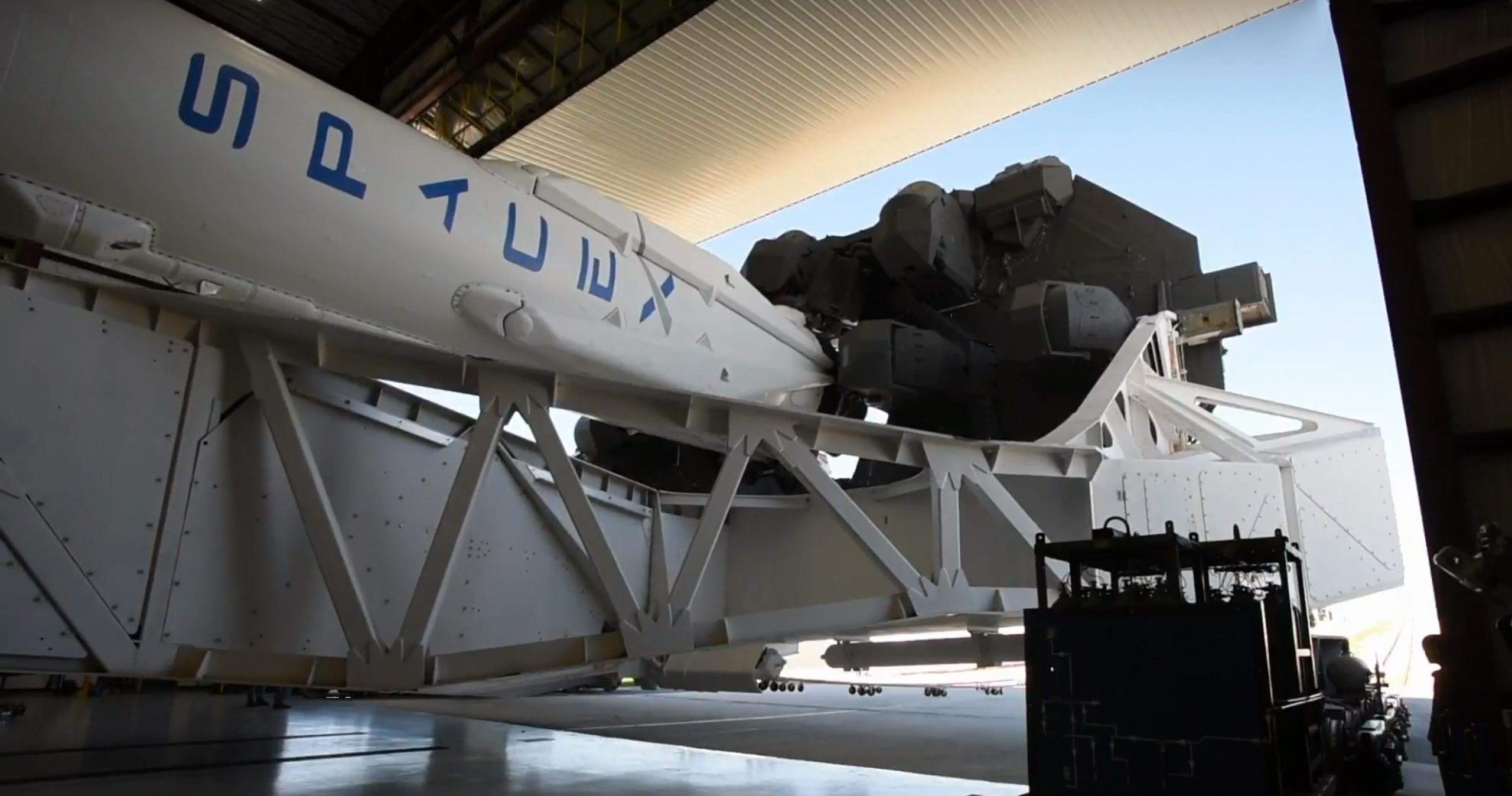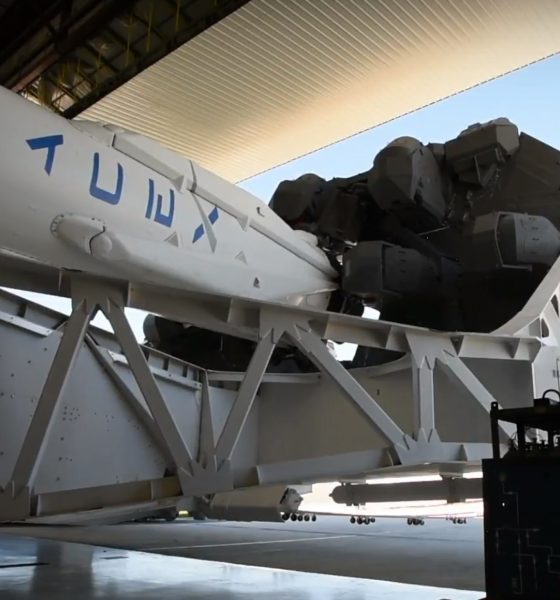

News
SpaceX completes Falcon 9 test fire, space station supply mission up next
After almost exactly 15 months of dormancy, SpaceX’s Launch Complex 40 (LC-40) came to life with the roar of nine Merlin 1D rocket engines as Falcon 9 1035 conducted its second pre-launch static fire in preparation for the company’s 13th Commercial Resupply Services mission, CRS-13. Previously tasked with the launch of the CRS-11 Cargo Dragon, the booster completed its mission and returned safely to Landing Zone-1 (LZ-1) on June 3 2017. The path towards LC-40’s reactivation has delayed the launch approximately one week, but December 6th’s successful static fire bodes well for the current launch date, 11:46 AM on December 12.
Static fire test of Falcon 9 complete—targeting launch of CRS-13 on December 12 from Pad 40, followed by launch of Zuma from Pad 40 in early January.
— SpaceX (@SpaceX) December 6, 2017
On September 6 2016, LC-40 was effectively destroyed over the course of the Amos-6 failure. In months that followed, SpaceX reactivated LC-39A in order to continue chipping away at the company’s launch manifest, but also began the slow process of damage assessment and reconstruction of LC-40. It is safe to assume that almost every single component of the ground support equipment (GSE) was completely replaced, and interviews with Cape Canaveral’s 45th Space Wing commander suggest that SpaceX went further still, transforming the painful situation into an opportunity.
In an exclusive and frank conversation between Brig. Gen. Wayne Monteith and Florida Today’s Emre Kelly, the commander suggested that extensive design changes and additional hardening measures implemented during reconstruction are expected to make LC-40 exceptionally resilient to the rigors of rocket launches. Most tellingly, if perhaps overly optimistic, Monteith estimated that a second vehicle failure on the order of Amos-6 might only take two months to recover from, compared to the 15 months that followed Amos-6. He attributed this claim to GSE that is now largely buried underground, theoretically protecting the vast apparatus of hand-welded piping necessary to fuel the Falcon 9 launch vehicle. The replacement Transporter/Erector/Launcher (TEL) tasked with supporting Falcon 9 during integration and launch also appears to have been modernized, and will likely end up looking quite similar to the monolithic white TEL that resides at LC-39A.
Rocket and spacecraft for CRS-13 are flight-proven. Falcon 9’s first stage previously launched SpaceX’s eleventh resupply mission for @NASA, and Dragon flew to the @Space_Station in support of our sixth cargo resupply mission. pic.twitter.com/RY4F2TrWO2
— SpaceX (@SpaceX) December 6, 2017
With CRS-13’s static fire now complete, the mission is set to become the fifth operational reuse of a flight-proven Falcon 9 booster in 2017, thanks to NASA’s unusually rapid acceptance of the new practice. Further still, if Iridium-4’s December 22 launch date holds, and it does look to be stable for the moment, SpaceX will rather incredibly have conducted five commercial reuses of a Falcon 9 in its first year of operations, meaning that one third of SpaceX’s 2017 missions will have launched aboard flight-proven boosters. Also impressive is SpaceX’s full-stop move towards the reuse of Cargo Dragon capsules, and the company stated over the summer that it was hoping to almost completely redirect Cargo Dragon’s manufacturing facilities towards Dragon 2, also known as Crew Dragon. This was most recently reiterated several months ago and is presumed to still be the company’s goal moving forward, and CRS-12 is believed to have been the last “new” Cargo Dragon that will fly. CRS-13’s Dragon previously flew the CRS-6 mission in April 2015.

Photos shared privately with the author show CRS-13’s Falcon 9 to be covered in a graceful layer of soot from its previous recovery, similar in appearance to Falcon 9 1021 seen above. (Instagram/bambi_mydear)
In a December 6 tweet, SpaceX further confirmed that the deeply secretive Zuma mission, previously delayed from an early-November launch as a result of concerns about fairing defects, has now been moved from LC-39A to LC-40 and is understood to be targeting January 4 2018. This will give SpaceX approximately three weeks after the launch of CRS-13 to verify that everything is functioning nominally in what is essentially a new pad.
Meanwhile, with Zuma now officially moved to 40, LC-39A is completely free from routine operations, meaning that SpaceX’s ground crew can now work at will to ready the pad for the inaugural launch of Falcon Heavy, now aiming for early 2018. Aside from Falcon Heavy, recent FCC filings point to two additional SpaceX launches aiming for January, although slips are probable in light of CRS-13’s minor delays. Regardless, December and January are likely to be thrilling months for followers of the intrepid space exploration outfit.

Elon Musk
Elon Musk’s X will start using a Tesla-like software update strategy
The initiative seems designed to accelerate updates to the social media platform, while maintaining maximum transparency.

Elon Musk’s social media platform X will adopt a Tesla-esque approach to software updates for its algorithm.
The initiative seems designed to accelerate updates to the social media platform, while maintaining maximum transparency.
X’s updates to its updates
As per Musk in a post on X, the social media company will be making a new algorithm to determine what organic and advertising posts are recommended to users. These updates would then be repeated every four weeks.
“We will make the new 𝕏 algorithm, including all code used to determine what organic and advertising posts are recommended to users, open source in 7 days. This will be repeated every 4 weeks, with comprehensive developer notes, to help you understand what changed,” Musk wrote in his post.
The initiative somewhat mirrors Tesla’s over-the-air update model, where vehicle software is regularly refined and pushed to users with detailed release notes. This should allow users to better understand the details of X’s every update and foster a healthy feedback loop for the social media platform.
xAI and X
X, formerly Twitter, has been acquired by Elon Musk’s artificial intelligence startup, xAI last year. Since then, xAI has seen a rapid rise in valuation. Following the company’s the company’s upsized $20 billion Series E funding round, estimates now suggest that xAI is worth tens about $230 to $235 billion. That’s several times larger than Tesla when Elon Musk received his controversial 2018 CEO Performance Award.
As per xAI, the Series E funding round attracted a diverse group of investors, including Valor Equity Partners, Stepstone Group, Fidelity Management & Research Company, Qatar Investment Authority, MGX, and Baron Capital Group, among others. Strategic partners NVIDIA and Cisco Investments also continued support for building the world’s largest GPU clusters.
News
Tesla FSD Supervised wins MotorTrend’s Best Driver Assistance Award
The decision marks a notable reversal for the publication from prior years, with judges citing major real-world improvements that pushed Tesla’s latest FSD software ahead of every competing ADAS system.

Tesla’s Full Self-Driving (Supervised) system has been named the best driver-assistance technology on the market, earning top honors at the 2026 MotorTrend Best Tech Awards.
The decision marks a notable reversal for the publication from prior years, with judges citing major real-world improvements that pushed Tesla’s latest FSD software ahead of every competing ADAS system. And it wasn’t even close.
MotorTrend reverses course
MotorTrend awarded Tesla FSD (Supervised) its 2026 Best Tech Driver Assistance title after extensive testing of the latest v14 software. The publication acknowledged that it had previously criticized earlier versions of FSD for erratic behavior and near-miss incidents, ultimately favoring rivals such as GM’s Super Cruise in earlier evaluations.
According to MotorTrend, the newest iteration of FSD resolved many of those shortcomings. Testers said v14 showed far smoother behavior in complex urban scenarios, including unprotected left turns, traffic circles, emergency vehicles, and dense city streets. While the system still requires constant driver supervision, judges concluded that no other advanced driver-assistance system currently matches its breadth of capability.
Unlike rival systems that rely on combinations of cameras, radar, lidar, and mapped highways, Tesla’s FSD operates using a camera-only approach and is capable of driving on city streets, rural roads, and freeways. MotorTrend stated that pure utility, the ability to handle nearly all road types, ultimately separated FSD from competitors like Ford BlueCruise, GM Super Cruise, and BMW’s Highway Assistant.
High cost and high capability
MotorTrend also addressed FSD’s pricing, which remains significantly higher than rival systems. Tesla currently charges $8,000 for a one-time purchase or $99 per month for a subscription, compared with far lower upfront and subscription costs from other automakers. The publication noted that the premium is justified given FSD’s unmatched scope and continuous software evolution.
Safety remained a central focus of the evaluation. While testers reported collision-free operation over thousands of miles, they noted ongoing concerns around FSD’s configurable driving modes, including options that allow aggressive driving and speeds beyond posted limits. MotorTrend emphasized that, like all Level 2 systems, FSD still depends on a fully attentive human driver at all times.
Despite those caveats, the publication concluded that Tesla’s rapid software progress fundamentally reshaped the competitive landscape. For drivers seeking the most capable hands-on driver-assistance system available today, MotorTrend concluded Tesla FSD (Supervised) now stands alone at the top.
News
Elon Musk’s Grokipedia surges to 5.6M articles, almost 79% of English Wikipedia
The explosive growth marks a major milestone for the AI-powered online encyclopedia, which was launched by Elon Musk’s xAI just months ago.

Elon Musk’s Grokipedia has grown to an impressive 5,615,201 articles as of today, closing in on 79% of the English Wikipedia’s current total of 7,119,376 articles.
The explosive growth marks a major milestone for the AI-powered online encyclopedia, which was launched by Elon Musk’s xAI just months ago. Needless to say, it would only be a matter of time before Grokipedia exceeds English Wikipedia in sheer volume.
Grokipedia’s rapid growth
xAI’s vision for Grokipedia emphasizes neutrality, while Grok’s reasoning capabilities allow for fast drafting and fact-checking. When Elon Musk announced the initiative in late September 2025, he noted that Grokipedia would be an improvement to Wikipedia because it would be designed to avoid bias.
At the time, Musk noted that Grokipedia “is a necessary step towards the xAI goal of understanding the Universe.”
Grokipedia was launched in late October, and while xAI was careful to list it only as Version 0.1 at the time, the online encyclopedia immediately earned praise. Wikipedia co-founder Larry Sanger highlighted the project’s innovative approach, noting how it leverages AI to fill knowledge gaps and enable rapid updates. Netizens also observed how Grokipedia tends to present articles in a more objective manner compared to Wikipedia, which is edited by humans.
Elon Musk’s ambitious plans
With 5,615,201 total articles, Grokipedia has now grown to almost 79% of English Wikipedia’s article base. This is incredibly quick, though Grokipedia remains text-only for now. xAI, for its part, has now updated the online encyclopedia’s iteration to v0.2.
Elon Musk has shared bold ideas for Grokipedia, including sending a record of the entire knowledge base to space as part of xAI’s mission to preserve and expand human understanding. At some point, Musk stated that Grokipedia will be renamed to Encyclopedia Galactica, and it will be sent to the cosmos.
“When Grokipedia is good enough (long way to go), we will change the name to Encyclopedia Galactica. It will be an open source distillation of all knowledge, including audio, images and video. Join xAI to help build the sci-fi version of the Library of Alexandria!” Musk wrote, adding in a later post that “Copies will be etched in stone and sent to the Moon, Mars and beyond. This time, it will not be lost.”








